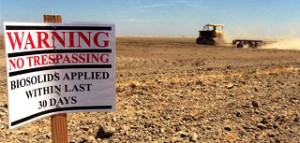From Guest Blogger Lizzie Weakly: Understanding Biosolids Management–An Eco-Friendly Guide

Recycling method; this process converts waste into reusable material. It is the most applied method in modern days. This process is eco-friendly because it does not pollute the environment, it is cost effective. It also reduces the cost of a landfill by a higher volume. Recycling cleans the world, take for example if beverage bottles are not recyclable. The environment would be suffocated by sites of broken bottles all over. Biosolids are obtained through recycling. Biosolids are residual of wastewater be it from the sewer, from industrial effluents, etc. Waste water is treated by a process approved by environmental conservation boards. The solid part of the waste after processing is what we call biosolids. It is organic and has several nutrients such as copper, molybdenum, iron and zinc that are useful for soil fertility and in plant growth. Some systems can be used domestically or for commercial purposes to process biosolids. Companies like Uzelac Industries have developed biosolid management systems.
Landfilling; this is an ancient method of waste disposal where waste products are buried in the soil. This method has many disadvantages than advantages. It is not a costly procedure, it only requires a large open space to bury the waste. The organic part of the waste becomes manure and improve soil fertility. However, it pollutes air and land. It contaminates ground water, has the odor, can cause infectious diseases among other negative implications.
Incineration; this process involves burning of organic content in the waste material. This process converts waste into heat, ash and flue gas. The heat produced by incineration process can be used to generate electricity. The gas that is emitted is first treated and then released into the atmosphere. The ash is the inorganic constituents of the waste. It is the best method to dispose of toxic substances as they are destroyed by high temperatures.
In conclusion, recycling has more benefits than landfilling and incineration. It is of great importance to adopt new technologies to recycle waste products. The technology has developed biosolid management systems that are eco-friendly and pocket-friendly.

Your examination of the options is extremely superficial and contains many errors. Biosolids contains many toxins and this makes it a poor choice for land application. To quote Caroline Snyder (Harvard), “Digested sewage sludge ( aka biosolids)– whether Class B or Class AA EQ– is not an organic. It contains a vast array of unregulated synthetic industrial chemicals, some of which are persistent, toxic, and can be absorbed by plants. Pollutants include prions shed by Alzheimer patients that become even more toxic when applied to soil, infectious hospital waste, solvents, carcinogens, pharmaceuticals, and neurotoxins. Dewatering sludge concentrates the pollutants in the solids and creates superbugs which can pass their resistance on to soil microorganisms through horizontal gene transfer. Under a little known law–40 CFR 261.30(d) and 261.33(e)– every entity connected to a sewer can legally discharge its hazardous waste into sewage treatment plants. No amount of treatment can remove these pollutants from the final product. In fact, sludge from industrialized urban centers is probably the most pollutant-rich waste of the 21st century. A recent EPA Inspector report warns the agency that the industrial pre-treatment program is inadequate and not being enforced, as hundreds of priority pollutants are ending up in treated wastewater and biosolids. Biosolids products do not belong on parks, farms, pastures, or forests. Instead sludge can be turned into a renewable source of energy.” For more information visit http://www.sludgefacts.org
Thanks, Don. I hope Lizzie will respond to your very cogent comments here.